By Ellen Abrams
Much of this information comes from Abram English Brown’s History of the Town of Bedford (1891), as well as other sources such as The Bedford Sampler Bicentennial Edition containing Daisy Pickman Oakley’s articles, Bedford Vital Records, New England Historical and Genealogical Register, Town Directories, and other publications from the Bedford Historical Society.
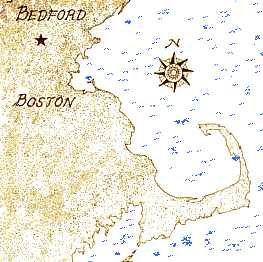
Our story begins in 1630 with the arrival of John Winthrop and Thomas Dudley of the Massachusetts Bay Company. Aboard the Arabella from Yarmouth, England, Winthrop and Dudley sailed, and after a difficult ten week voyage, they landed on the shores of the New World, with Salem and Boston harbor being the Arabella's earliest destinations. In 1637, the General Court of Massachusetts granted some 2200 acres of land, including Huckins Farm land to the first residential Governor Winthrop and Deputy Governor Dudley. The following year, the two men agreed to divide the land so that the parcel south of the two large boulders by the Concord River (Brothers Rocks) belonged to Governor Winthrop and north of the Rocks was to belong to Deputy Governor Dudley. Later, Dudley became governor. Dudley’s son and Winthrop’s daughter married, thus Brothers Rocks were so named because of this marriage of families.
Governor Winthrop’s grandson, Fitz John Winthrop, in 1664, sold 1200 acres of this land (including what is present day Huckins Farm land) to Job Lane, a skilled artisan and house builder. Upon his death, he passed much of this land to his son, Col. John Lane in the 1690's. The land later passed to his son, Capt. John Lane, in 1714. John Lane and his wife, Catherine (Whiting), lived on the site, and after she died, he married Hannah Abbott. Upon his death in 1763, their son, Samuel Lane, inherited the land we know as Huckins Farm. Some time after Samuel Lane died in 1802, the house was removed and Peter Farmer built the present farmhouse in the 1840's. We know that Peter and Dorcas Farmer had two children in the late 1820's and 1830's. Later, Banfield succeeded Farmer as the owner.
Samuel W. Huckins, born in 1817, settled on the land about 1870. Huckins was respected for his good judgment and was honored with various offices in town. Maps circa 1875 indicate that what we know as Dudley Road was called Huckins Street. Samuel Huckins lived there until his death in 1892. He had a son, Henry, who was born in 1849, and was living in Bedford in 1910.
In the late 1800's, Dudley Pickman and his wife, Ellen, fell in love with the land and bought a substantial parcel (mostly Winthrop’s land and a portion of Dudley’s grant). Included in this purchase was Huckins Farm. Pickman, a direct descendent of Winthrop and Dudley, bought the land without knowledge of the Winthrop-Dudley grant. He found out much later that he had purchased his ancestor’s land. The land was used as a dairy farm and apple orchard, in addition to the fields, pasture land, bog garden, and ponds. Chestnut trees lined the old road between the fields. Dudley Road had been named Chestnut Avenue around that time.
A large portion of the Pickman land, Huckins Farm, was sold to a developer for condominium development in 1987, and other parcels including the large Pickman house (Stearns Farm) were sold to private parties.
Local History
The Bedford Flag
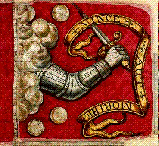
"By the rude bridge that arched the flood, their flag to April's breeze unfurled - here once the embattled farmers stood, and fired the shot hear round the world." ~ Ralph Waldo Emerson.
Bedford's proud flag, the oldest in the United States, was the one the Minutemen carried into battle on April 19, 1775. Its Latin motto is "Vince Aut Morire" - Conquer or Die. The flag is on display at the Bedford Free Public Library.
The Two Brothers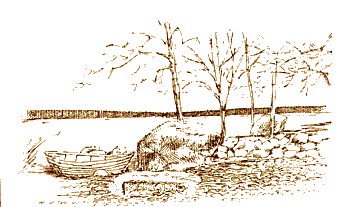
When Governor Winthrop and his Deputy Thomas Dudley viewed their lands in early 1638, they decided to use two great stones on the site to divide the property. Winthrop claimed the land to one side of one rock; Dudley claimed the land on the other side of the other rock. They named the rocks "The Two Brothers." Over the years, the two men had many differences; however they learned to work together and even considered themselves "brothers" by their children's marriage. The rocks have come to symbolize the men's sprit of cooperation and democracy. The two brothers can still be seen near the banks of the Concord River in the Great Meadows National Wildlife Refuge.
Great Meadows National Wildlife Refuge
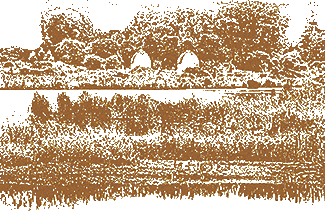 The early settlers called this area along the Concord River, "Great River Meadow" because they could harvest hay along the grass banks when the water retreated each summer. Today, this 12-mile stretch of freshwater wetlands is a sanctuary for migratory birds and wildlife. There are deer, cottontail rabbit, fox, raccoon, muskrat, beaver, weasel and over 200 species of birds seen here.
The early settlers called this area along the Concord River, "Great River Meadow" because they could harvest hay along the grass banks when the water retreated each summer. Today, this 12-mile stretch of freshwater wetlands is a sanctuary for migratory birds and wildlife. There are deer, cottontail rabbit, fox, raccoon, muskrat, beaver, weasel and over 200 species of birds seen here.
Job Lane House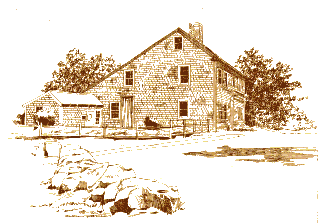

This traditional saltbox-style home dates back to the early 1700's and was built by one of Bedford's earliest settlers, Job Lane. A master carpenter, Lane was also a town officer and a Minuteman. He was wounded in the battle of Lexington and Concord. The house and grounds adjacent to Huckins Farm was recently restored and is open to the public.
Fitch Tavern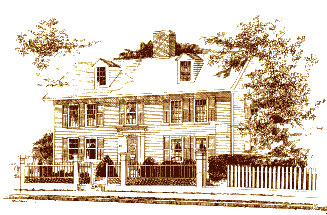
Early on the morning of April 19, 1775, an alarm sounded warning the people of Bedford that British soldiers were marching from Boston to Concord. Their captain, Jonathan Willson, told them, "It is a cold breakfast boys, but we'll give them a hot dinner." The Fitch Tavern is located in Bedford center, a little over a mile from Huckins Farm.